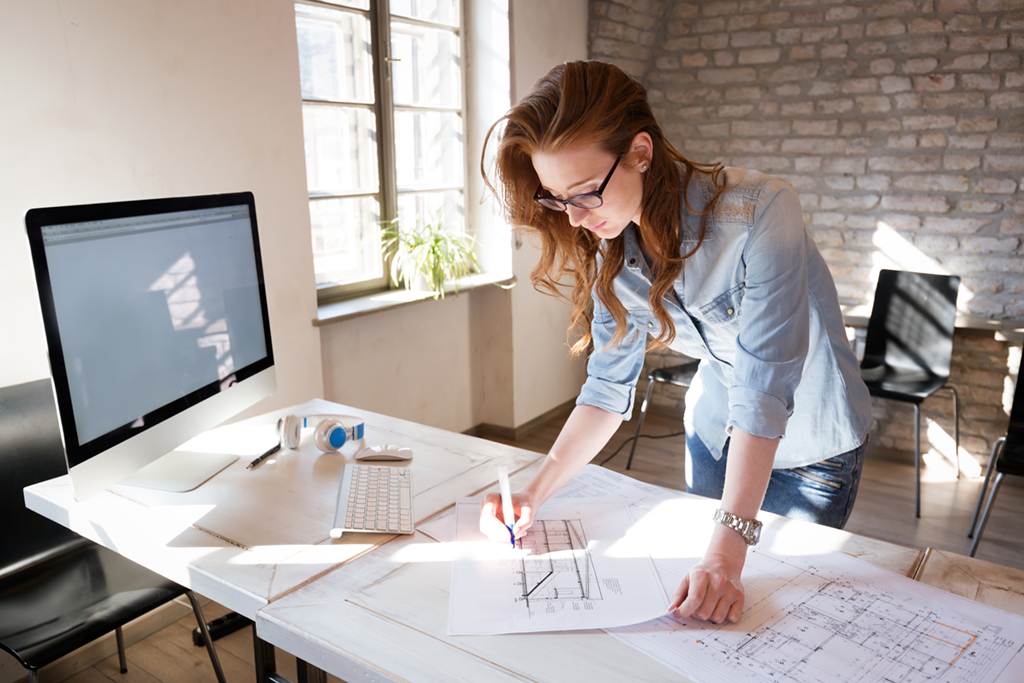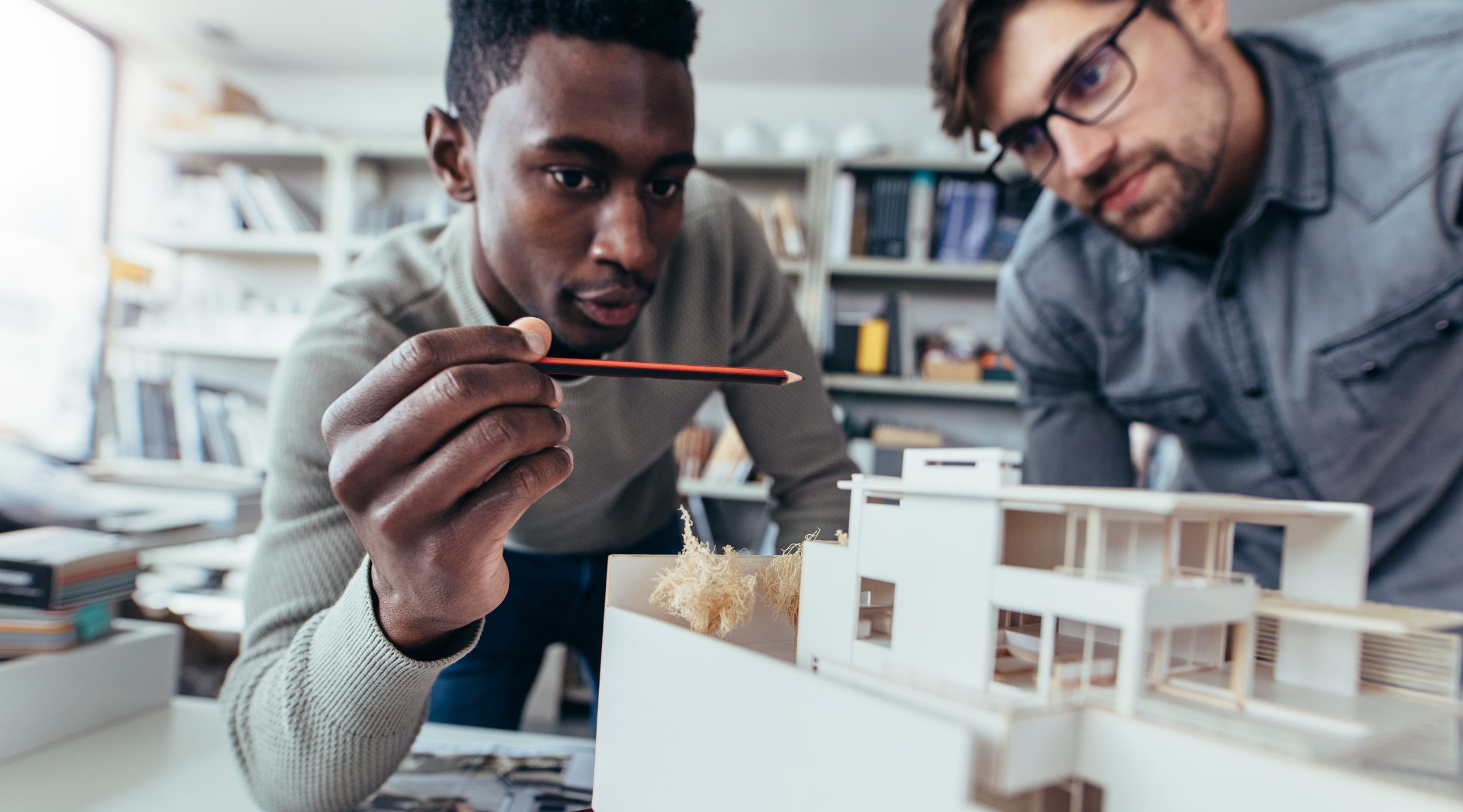Architect Collaboration Tips for Working with Consultants and Project Managers
The Role of Sustainability and Modern Technology in Modern Architect Practices
Sustainability and innovation are reshaping contemporary architecture in means you may not expect. By welcoming green products and clever developments, engineers are not simply producing buildings; they're crafting environments that improve our lifestyle. This change isn't almost aesthetic appeals or functionality; it's concerning developing a liable strategy to our planet's future. What's driving this improvement, and how can these modifications influence your community?
The Relevance of Sustainable Design
Sustainable architecture is necessary not just for the environment however likewise for enhancing our high quality of life. When you accept lasting style, you're not just lowering your carbon impact; you're creating areas that advertise health and wellness and wellness.
Furthermore, lasting architecture usually results in stronger communities. When structures are designed with eco-friendly practices, they can inspire others to do the same, cultivating a society of sustainability. You'll discover raised home values and a greater sense of satisfaction in your environments.
Finally, by focusing on sustainability, you're purchasing the future. You're guaranteeing that future generations appreciate a healthier world and vibrant areas. When you consider your following job, think regarding how lasting style can boost your life and those around you.
Ingenious Materials Transforming Building Practices
As you check out innovative materials in architecture, you'll locate that naturally degradable construction products are improving exactly how we think of sustainability. Recycled web content developments are offering brand-new life to waste, while smart product technologies improve building performance. These improvements not only advertise eco-friendliness yet also press the limits of layout.
Biodegradable Building Products
While typical building materials usually contribute to ecological degradation, biodegradable building materials are becoming a viable option that transforms structure techniques. You can discover choices like hempcrete, bamboo, and mycelium, which not just reduce waste but additionally promote sustainability. These products break down normally at the end of their lifecycle, decreasing land fill payments. By including naturally degradable choices right into your layouts, you're not just enhancing aesthetic appeal; you're also making a positive influence on the planet. Plus, they usually call for much less power to generate, further decreasing your task's carbon footprint. As you adapt to these ingenious materials, you'll locate that they provide toughness and flexibility, enabling you to create structures that straighten with modern-day worths of sustainability and obligation.
Recycled Content Innovations
In current years, ingenious materials with high recycled web content have transformed structure methods, providing engineers amazing brand-new options - Architect. You can currently incorporate products like recycled steel, which not only lowers waste however also flaunts impressive toughness. Recycled glass is one more fantastic selection, offering visual appeal while lessening environmental effect

Smart Material Technologies
Smart material technologies are improving the way you think about building techniques, supplying vibrant options that adapt to altering conditions. These innovative products, such as self-healing concrete and thermochromic glass, boost structure efficiency and sustainability. By integrating wise materials, you can create energy-efficient designs that react to their setting, lowering total power usage.
The Integration of Smart Technologies in Design
As technology evolves, incorporating clever services into architectural layout ends up being vital for creating effective and lasting spaces. You can include clever technologies like building monitoring systems, which optimize power usage and enhance owner convenience. Sensors can keep an eye on environmental problems, changing lighting and temperature level immediately based on real-time data. This flexibility not just boosts user experience however also minimizes power intake.
Incorporating Web of Points (IoT) devices enables for seamless interaction amongst various building systems, enabling you to make data-driven choices that boost functionality. Smart materials that respond to ecological adjustments can even more improve your layout, providing dynamic services to ever-changing problems.
Power Performance and Renewable Energy Solutions
While numerous designers concentrate on looks, focusing on energy effectiveness and eco-friendly power remedies is essential for sustainable design. You can start by integrating passive solar style, which maximizes all-natural light and warmth, decreasing dependence on artificial illumination and heating unit. Utilize high-performance insulation and energy-efficient windows to reduce energy loss.
Don't ignore sustainable power systems-- mount solar panels or wind turbines to create clean energy on-site. You can likewise think about including geothermal home heating and cooling down systems for a more sustainable temperature law.
By picking energy-efficient devices and lights, you'll not just decrease energy usage however likewise lower functional prices for constructing residents.
Incorporating these principles right into your layouts not just profits the setting but additionally improves the building's allure and worth. Eventually, your commitment to power effectiveness and renewable power will set your projects apart in a competitive market.
Water Conservation Approaches in Modern Architecture
Incorporating water preservation strategies into modern-day architecture is essential for creating sustainable buildings that lessen ecological effect. You can achieve this by incorporating rain harvesting systems, which collect and save rainfall for irrigation and non-potable usages. Executing low-flow components and wise irrigation systems likewise decreases water intake, making certain effective use throughout the building.
Think about using drought-resistant landscape design, which calls for less water and advertises biodiversity. Incorporating absorptive paving materials enables rainwater to infiltrate the ground, reducing overflow and recharging groundwater products.
In addition, setting up greywater recycling systems can repurpose water from sinks and showers for toilet flushing or watering, further preserving resources.
The Effect of Biophilic Design on Health
Biophilic style brings nature indoors, and you'll see its positive results on your wellness and happiness. By improving indoor air high quality and connecting you with natural aspects, these rooms can change your day-to-day experience. Let's explore exactly how incorporating these attributes can boost your general wellness.
Nature's Impact on Health and wellness
When you incorporate aspects of nature into your environments, it can considerably enhance your physical and mental wellness. Biophilic style, which stresses natural light, plants, and natural materials, cultivates a sense of link to the outdoors. Welcoming biophilic style is an action toward a much healthier lifestyle.
Enhancing Indoor Air High Quality
While many people concentrate on looks and performance in layout, enhancing indoor air high quality plays a vital duty in your overall wellness. By including biophilic layout components, you can boost air quality naturally. Prioritizing these elements in your design will not resource just boost your room but also promote a feeling of tranquility and health.
Link With Natural Elements
When you get in touch with all-natural components in your area, you not only boost its visual charm but additionally substantially improve your health. Biophilic layout urges you to incorporate features like plants, all-natural light, and organic materials. These aspects develop a soothing environment, lowering tension and anxiousness. Research reveals that being around nature can boost your state of mind and cognitive function, assisting you feel extra effective and focused. When you invite the outdoors inside, you may notice much better air quality and raised comfort. Straightforward modifications, like including a living wall or large windows, can greatly affect your experience (Architect). Ultimately, incorporating nature into your setting leads you to a much healthier, happier way of living, promoting a much deeper connection to the world around you.
Future Patterns in Lasting Architectural Practices
As the world encounters pressing ecological challenges, designers are significantly embracing innovative techniques to sustainability that redefine just how we style and construct. You'll see a surge in biophilic style, incorporating nature right into city spaces to enhance well-being and minimize power intake. Smart modern technologies, like AI and IoT, are streamlining energy monitoring in buildings, optimizing resource use, other and reducing waste.
Additionally, modular building and construction is obtaining grip, enabling much faster, a lot more reliable structure processes while decreasing environmental impact. Making use of lasting products, such as recovered wood and recycled metals, is becoming basic practice. As you explore these fads, anticipate a change toward circular layout, emphasizing the lifecycle of products and advertising reuse and recycling.
These forward-thinking techniques not only address ecological problems yet likewise produce healthier, extra durable neighborhoods. By staying educated regarding these trends, you can assist form a sustainable future in design.
Frequently Asked Questions
How Can Sustainability Affect Project Prices and Spending Plans?
Sustainability can considerably influence project prices and budgets. You might locate that preliminary investments in environmentally friendly products or innovations result in lasting cost savings via power efficiency, minimized waste, and potential federal government incentives, inevitably balancing the general expenses.
What Qualifications Exist for Sustainable Design?
You'll find a number of qualifications for sustainable design, including LEED, BREEAM, and the Living Building Obstacle. These certifications assist you show your commitment to sustainability and can improve your task's integrity and interest clients.
Just How Does Local Culture Impact Lasting Design?
Regional society forms sustainable style by showing area practices, materials, and values. You'll find that incorporating neighborhood visual appeals and methods you could try this out not only respects heritage however likewise boosts the capability and approval of your architectural projects.
What Function Does Client Education Play in Lasting Practices?
Customer education and learning's crucial for promoting sustainable methods. When you notify clients regarding advantages, expenses, and ecological influences, you encourage them to make enlightened choices, cultivating a collaborative technique that improves the job's general sustainability.

Exactly How Can Architects Gauge the Success of Sustainability Campaigns?
You can measure the success of sustainability campaigns by tracking energy consumption, examining product efficiency, and event comments from customers. Regular audits and comparisons against criteria will certainly aid you refine your techniques and display improvements efficiently.
By incorporating clever products, you can create energy-efficient designs that respond to their atmosphere, reducing overall energy consumption.While numerous designers focus on looks, focusing on power performance and eco-friendly power remedies is crucial for lasting layout. Biophilic layout, which emphasizes natural light, plants, and natural materials, fosters a sense of connection to the outdoors. Biophilic style urges you to integrate attributes like plants, all-natural light, and natural products. As you explore these patterns, anticipate a change towards circular layout, emphasizing the lifecycle of products and promoting reuse and recycling.